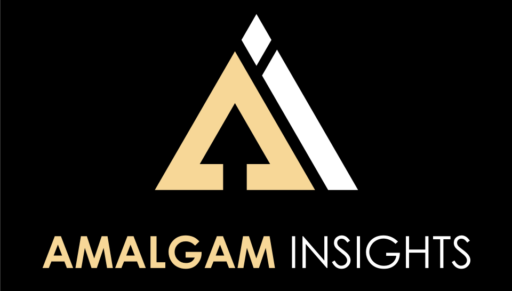If you would like your announcement to be included in these data platform-focused roundups, please email lynne@amalgaminsights.com.
Funding
DataRobot Unveils Major Milestones, Including $300M Series G Funding Investment
On July 27, DataRobot announced a $300M Series G funding round. Repeat investors Altimeter Capital and Tiger Global led the round, along with participation from new investors Counterpoint Global (Morgan Stanley), Franklin Templeton, ServiceNow Ventures, and Sutter Hill Ventures. The funding will be used for further development of DataRobot’s Augmented Intelligence platform, as well as expanding its go-to-market team.
Kili Technology raises $25M Series A
Also on July 27, Kili Technology revealed that it had raised a $25M Series A funding round. Balderton Capital led the round. The company is looking to accelerate hiring with the funding.
SAS charts path to IPO-readiness
On July 29, SAS announced that it intended to be ready for an IPO by 2024. Key steps SAS will take over the next couple of years include refining its financial reporting structure, optimizing certain operational processes, and further developing its AI and analytics capabilities.
Acquisitions and Partnerships
Alteryx and PwC Expand Strategic Relationship Globally to Address Analytics Automation Demand
Blue Prism Partners with Alteryx to Drive Faster, More Reliable Data Analytics
Alteryx revealed news about two partnerships this week. On July 28, Alteryx announced a new partnership with Blue Prism, an intelligent automation company, along with a bi-directional integration between the two platforms. Blue Prism developers will be able to include Alteryx analytic processes within RPA-driven processes, while Alteryx analysts will be able to trigger Blue Prism digital workers from within their Alteryx workflows.
On July 29, Alteryx announced that it was expanding its relationship with PwC. The original partnership, announced in February 2020, focused on upskilling and digital transformation efforts in US companies; these efforts are now being expanded globally.
Atos acquires Visual BI to enhance its ability to address customers’ increasing need for analytics in the cloud
On July 29, Atos, a digital transformation company, announced that it was acquiring Visual BI, a cloud data analytics company. By acquiring Visual BI, Atos hopes to address its customers’ increasing need for cloud-based BI and analytics.
DataRobot is Acquiring Algorithmia, Enhancing Leading MLOps Architecture for the Enterprise
The same day it announced $300M in Series G Funding (see above), DataRobot also revealed that it was acquiring MLOps platform Algorithmia.
Domino Data Lab Announces New Partner Network
On July 29, Domino Data Lab debuted the Domino Partner Network, connecting technology and services partners across four categories: Tools & Data, Infrastructure, Solutions, and Implementation & Consulting. Inaugural members include Accenture, AWS, DataArt, Dell Technologies, MathWorks, NetApp, NVIDIA, and Snowflake, among others.
Google Cloud and SAP Partner to Accelerate Business Transformations in the Cloud
IBM and SAP to Help Financial Institutions Accelerate Cloud Adoption to Modernize Operations in a Secured Environment
SAP had two partner announcements this week as well. On July 28, SAP announced that it intends to expand the availability of SAP finance and data management solutions on IBM Cloud for Financial Services, which have built-in security and compliance controls to address financial regulations around risk and data. The goal is to accelerate adoption of IBM Cloud within the financial services industry.
On July 29, SAP and Google Cloud announced that they would be expanding their strategic partnership. Google Cloud will now be a strategic partner for RISE with SAP, SAP’s digital transformation offering. Similar to SAP’s IBM partnership, the goal is to accelerate cloud adoption and business process migration even further.
Product Enhancements
AtScale AI-Link Connects Business Intelligence and Enterprise AI with Semantic Layer to Scale Augmented Analytics and Data Science
On July 29, AtScale introduced AI-Link. AtScale allows BI teams to consume live cloud data with preferred apps; data scientists can now access the same data with Python via AI-Link to put into augmented analytics and machine learning models. AI-Link is available today as an add-on to AtScale.
EZOPS Supports Streamlined Data Control and Optimized Efficiency in Snowflake
On July 27, EZOPS announced that they are incorporating Snowflake support. Snowflake customers will be able to use EZOPS’ AI models to analyze data stream patterns for anomalies, and then escalate said anomalies within EZOPS Workflow for further triage and analysis.
Trifacta Delivers Head Start on Cloud Data Engineering With New Template Gallery
On July 27, Trifacta debuted pre-built cloud data engineering templates to further enable what they’re calling “self-service data management.” The templates will allow Trifacta users to tweak pre-configured data engineering workflows to suit their needs, then quickly deploy them. Some examples of the available templates include transforming data to a target schema using a mapping table, identifying sentiment keywords and calculating NPS, and importing data from Google Cloud Storage to BigQuery.
Hiring
Kyndryl Names David Wyshner As Chief Financial Officer
Kyndryl, the new separate company of IBM’s Managed Infrastructure Services, has appointed David Wyshner as the company’s CFO. Wyshner was most recently the CFO of XPO Logistics; prior to that, Wyshner led the separation of Wyndham Worldwide into three separate companies during his time as CFO there.
Informatica Appoints Elizabeth Rafael to Board of Directors
On July 26, Informatica announced that Betsy Rafael has joined the Informatica board of directors, as well as the chair of the audit committee. Most recently, Rafael was the Chief Transformation Officer at GoDaddy. Preceding her stint at GoDaddy, Rafael served as Vice President and Corporate Controller and Principal Accounting Executive at Apple, and Vice President, Corporate Finance at Cisco.
